Königsberg District
Roger P. Minert, In Harm’s Way: East German Latter-day Saints in World War II (Provo, UT: Religious Studies Center, Brigham Young University, 2009), 283-8.
In 1918, the German Empire ceased to exist. A republican form of government was introduced, and the Treaty of Versailles took large portions of German territory and ceded them to other nations. When most of the province of West Prussia was given to Poland by that treaty, the province of East Prussia was totally separated from the rest of Germany (see map in introduction). Culturally and politically, East Prussia was isolated from the rest of Germany, surrounded by Poland, Russia, and Lithuania. The city of Königsberg (now Kalinengrad, Russia) was the historic capital of East Prussia and had been a stronghold of The Church of Jesus Christ of Latter-day Saints since the turn of the century.
| Königsberg District[1] | 1939 | 1940 | 1941 | 1942 |
| Elders | 30 | 30 | ||
| Priests | 8 | 20 | ||
| Teachers | 23 | 25 | ||
| Deacons | 41 | 38 | ||
| Other Adult Males | 152 | 155 | ||
| Adult Females | 424 | 430 | ||
| Male Children | 41 | 49 | ||
| Female Children | 52 | 58 | ||
| Total | 771 | 805 | 800 | 798 |
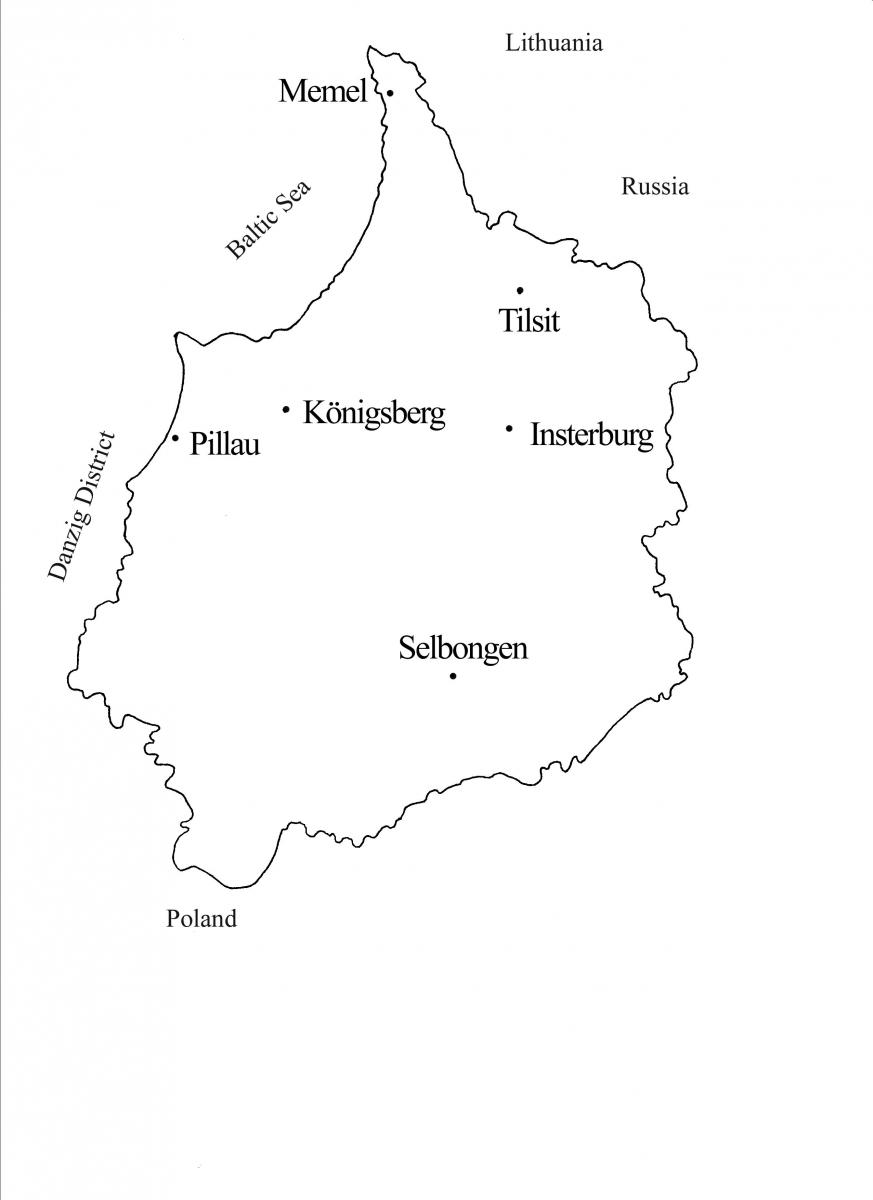 The Königsberg District was isolated from the rest of Germany.
The Königsberg District was isolated from the rest of Germany.
The largest branch of the Church in the district at the end of the year 1939 was in the city of Königsberg itself. Other branches in the Königsberg District were located in Memel (fifty miles north), Tilsit (forty-two miles northeast), Insterburg (thirty-three miles east), Selbongen (forty-five miles southeast), and Pillau (eighteen miles west). Each of the branches was within three hours of Königsberg by train. When leaders of the East German Mission wished to visit from Berlin, they had to cross the Polish corridor, then enter East Prussia (Germany) again—a distance of three hundred miles. It took about seven hours to reach Königsberg by train from Berlin.
The president of the Königsberg District throughout the war was Max Freimann of the Königsberg Branch. He served until his disappearance (along with several other Latter-day Saints) during the Soviet conquest of that city in April 1945.
Richard Deus (born 1903) of the Breslau South Branch, a full-time missionary, spent several weeks in the Königsberg District in late 1940. In an article he wrote for the Church magazine, Der Stern, he expressed his gratitude for the gracious manner in which he was received by the Saints during his tenure in East Prussia.[2]
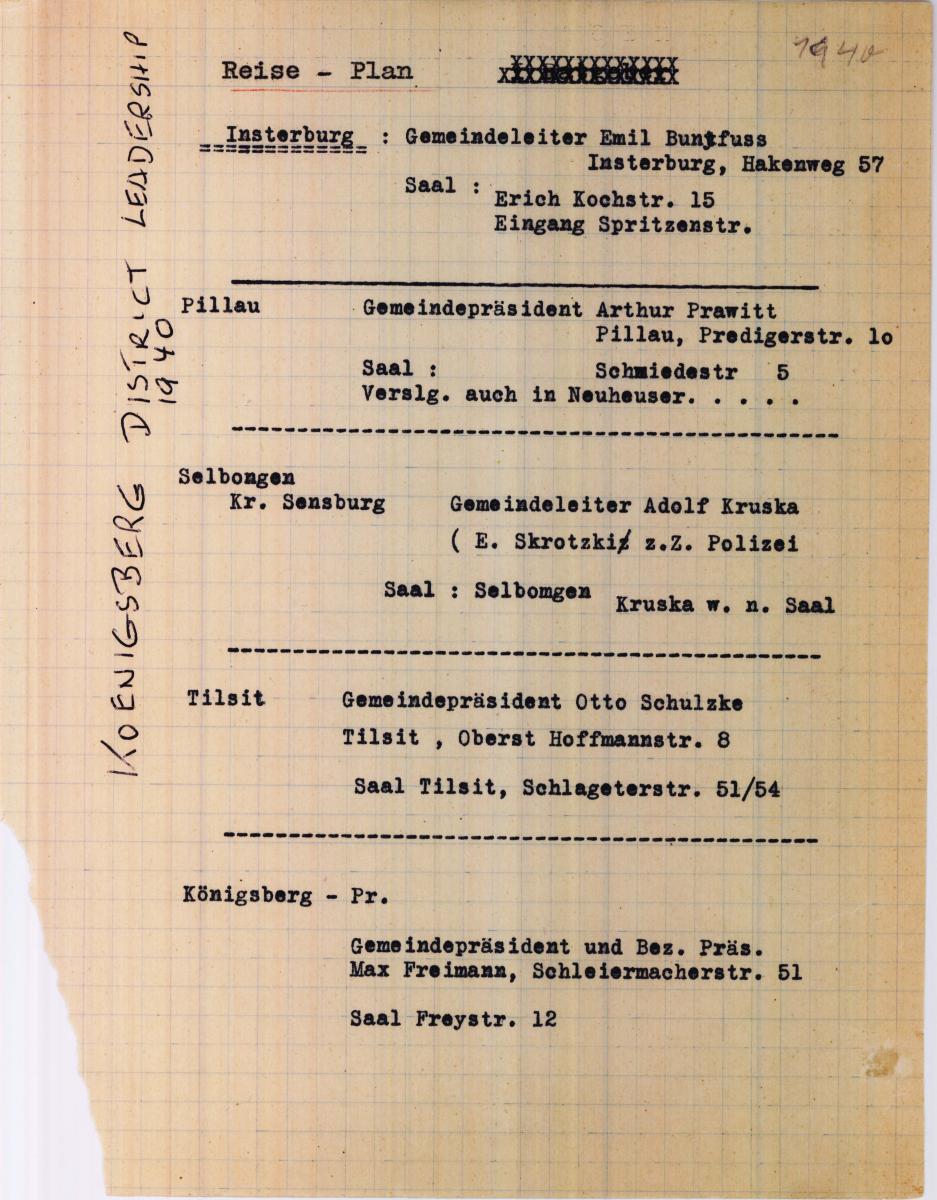 Traveling Elder Richard Deus typed this list of branches to visit in the Königsberg District in 1940 (M. Deus)
Traveling Elder Richard Deus typed this list of branches to visit in the Königsberg District in 1940 (M. Deus)
District president Max Freimann was dedicated to his calling, as his daughters recalled:
Every other Sunday, our father visited a different branch. He never left on Saturday—always on Sunday very early in the morning. He often had to walk many miles in the worst weather. He came home tired, but he never complained about the work he had to do.[3]
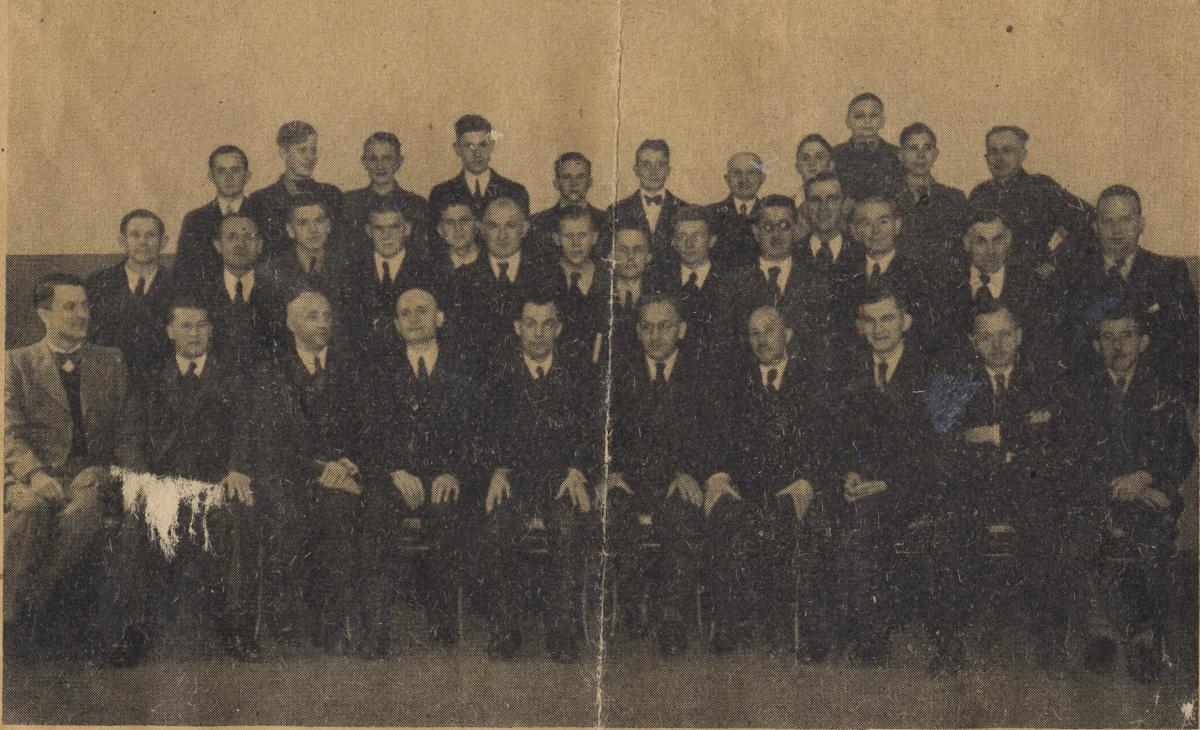 The priesthood meeting during the district conference in Königsberg in October 1940 (A. Buntfuss)
The priesthood meeting during the district conference in Königsberg in October 1940 (A. Buntfuss)
According to the memory of President Freimann’s son, Reinhard (born 1933), Max Freimann was called on by the city government to answer inquiries regarding the Church: “He was never a member of the [National Socialist] Party. Sometimes, he was summoned by the police and they asked him questions but nothing happened. . . . We [Latter-day Saints] were left alone.”[4]
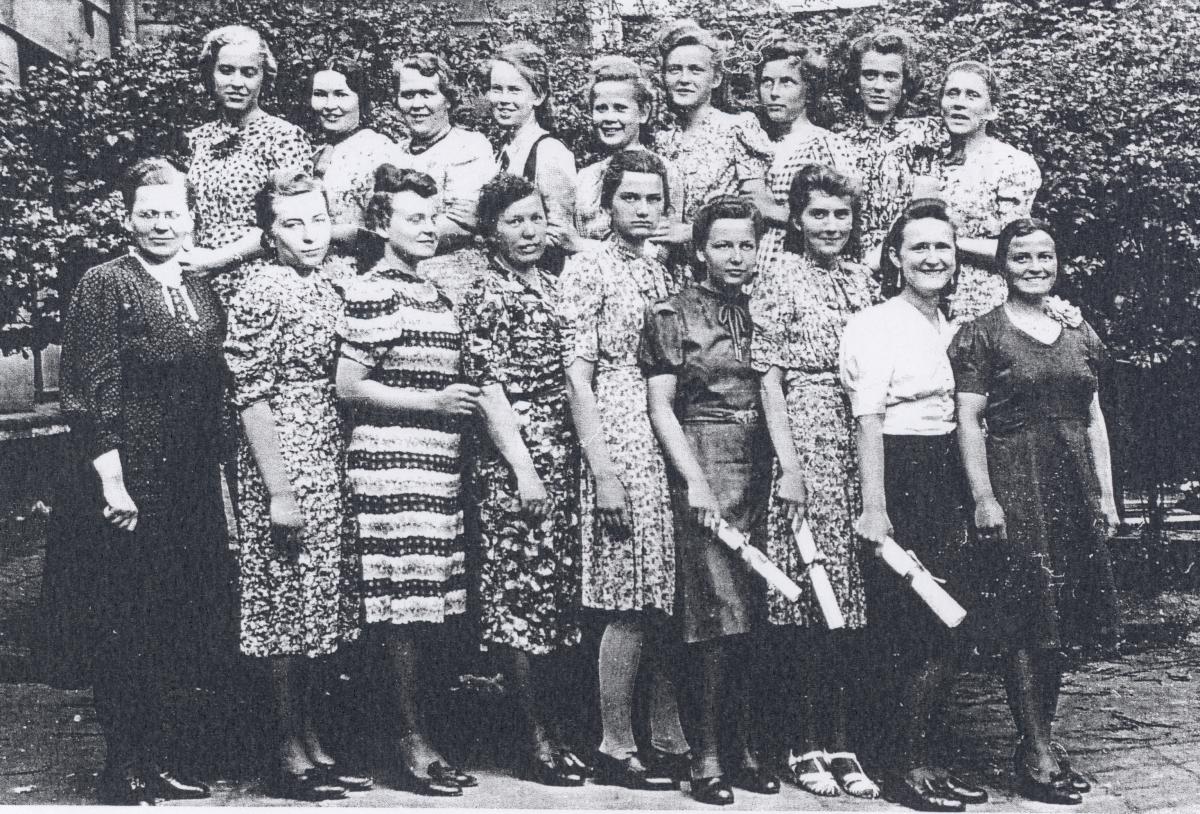 Gleaners and Beehives at a district conference in Königsberg on June 8, 1941. Irmgard Gottschalk and Erika Fassmann, missionaries from the Berlin office, are in the first row, second and third from left (R. Berger Rudolph)
Gleaners and Beehives at a district conference in Königsberg on June 8, 1941. Irmgard Gottschalk and Erika Fassmann, missionaries from the Berlin office, are in the first row, second and third from left (R. Berger Rudolph)
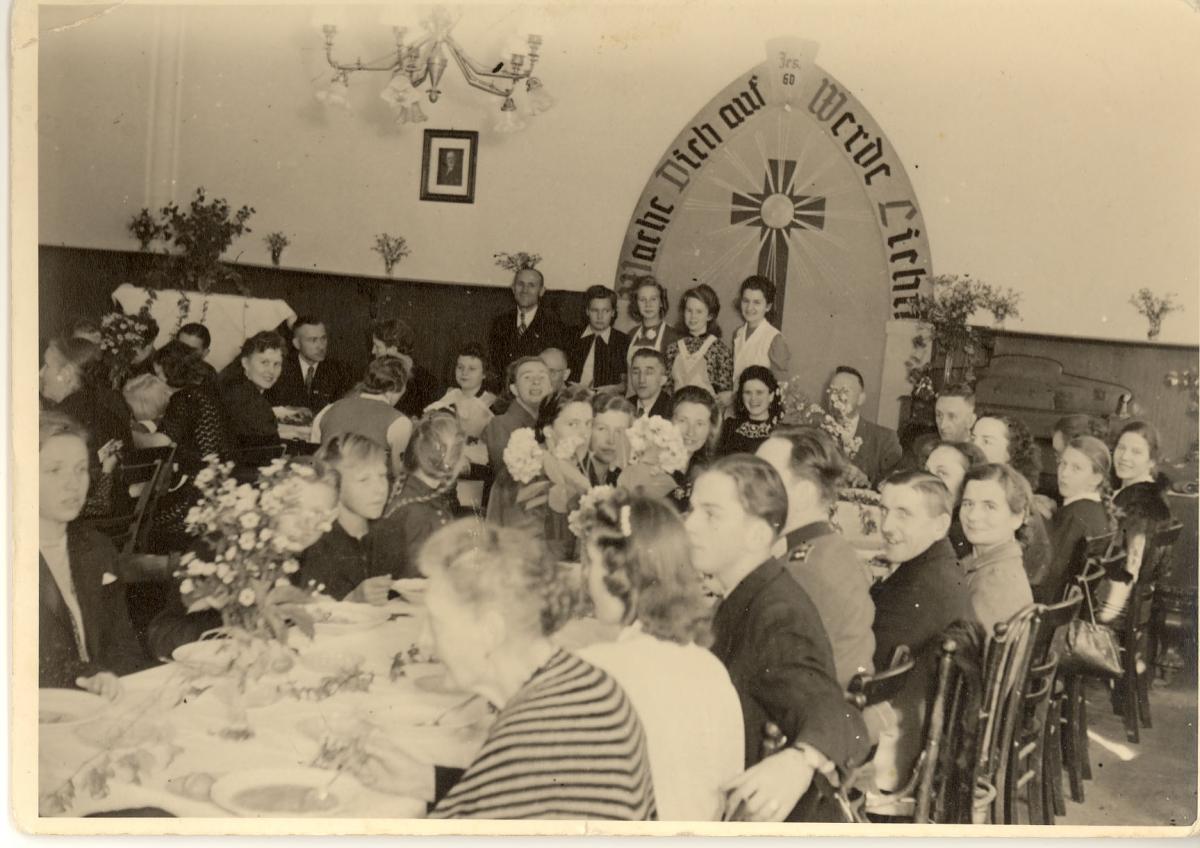 Festivities at a Königsberg District conference in 1942 (“Wake up and become a light!”)
Festivities at a Königsberg District conference in 1942 (“Wake up and become a light!”)
The records of the East German Mission in Berlin indicated that every district of the mission held a conference twice each year through the end of 1944. The conferences of the Königsberg District were always held in Königsberg on Friday through Sunday, or Saturday and Sunday in the later war years. The local Saints hosted members of the other five branches in their apartments. The Freimann sisters recalled how that worked: “They all slept on the floor and we managed to house [and feed] all the visitors.” As in other districts, participants emphasized the fun the Saints had when they gathered for such spiritual feasts, cultural activities, and entertainment.
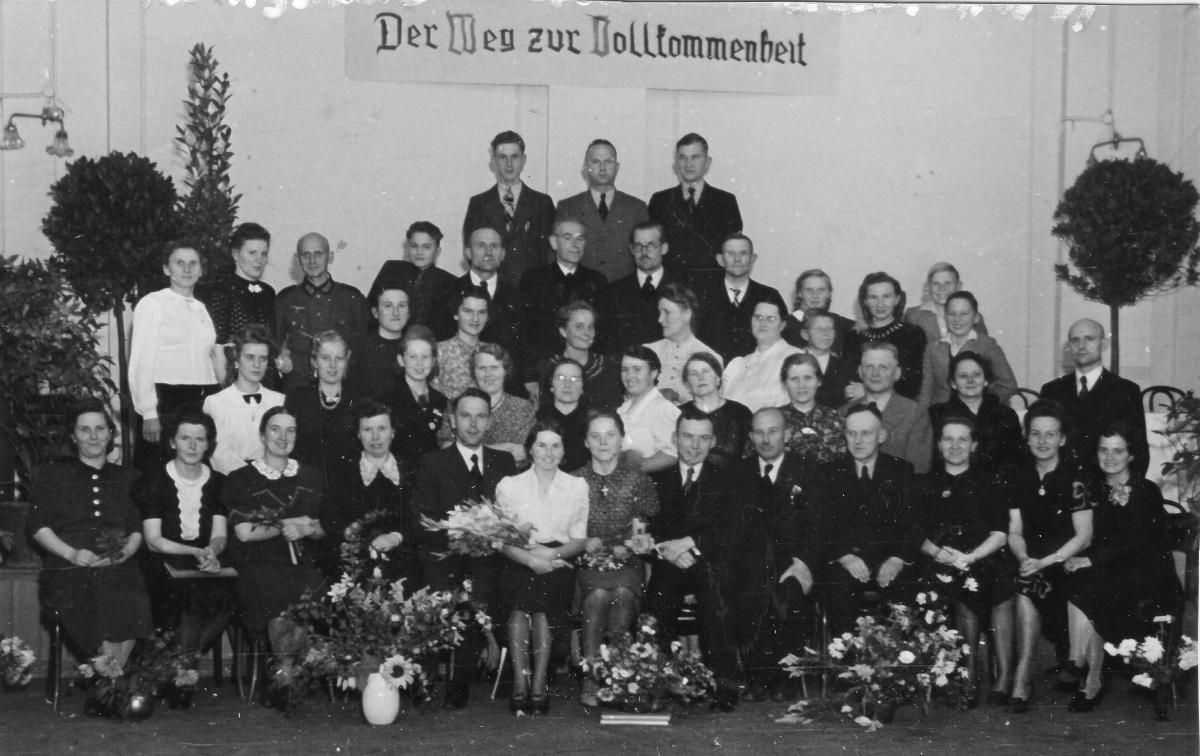 This choir sang for the Königsberg District conference in September 1941. The banner reads, “The path to perfection” (I. Reimer Ebert)
This choir sang for the Königsberg District conference in September 1941. The banner reads, “The path to perfection” (I. Reimer Ebert)
Inge Grünberg (born 1927) also recalled those semiannual events: “We had district conferences that were so well attended that we had 900 people or more, and sometimes there wasn’t room to get everybody in.”[5] The rooms at Freystrasse 10 were apparently large enough to accommodate sizable congregations.
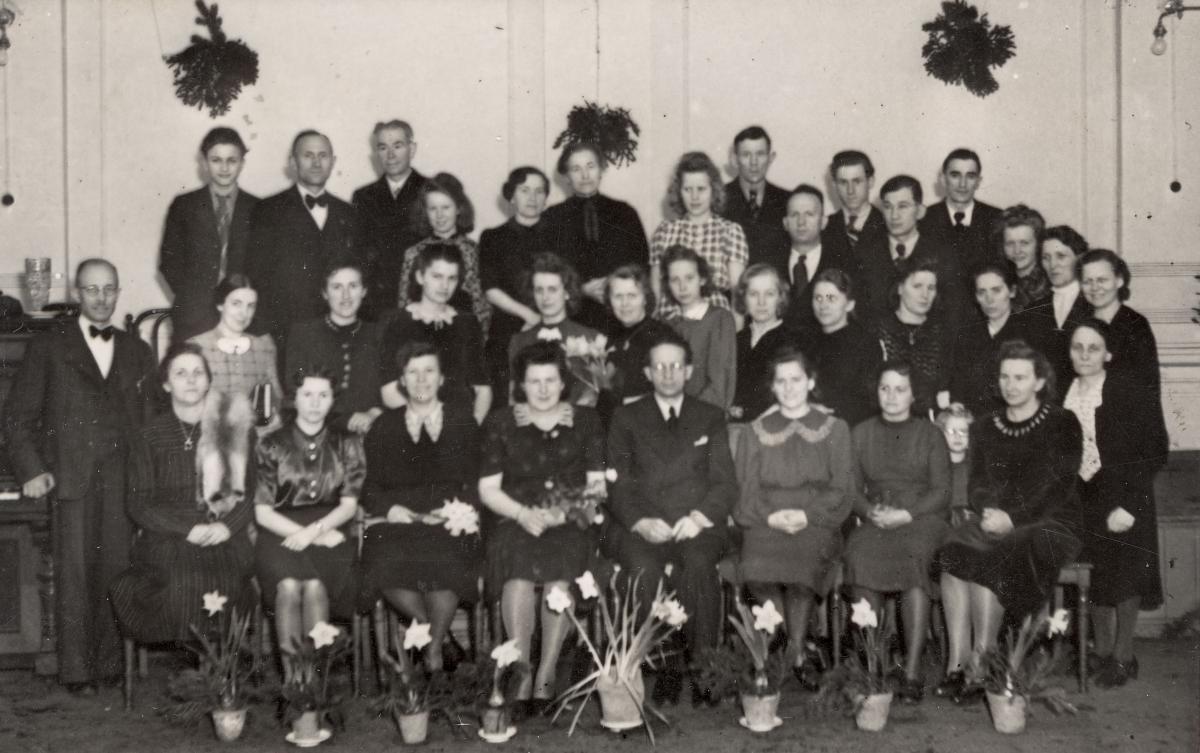 Attendees at a district conference in 1942. District president Max Freimann is at the far left.
Attendees at a district conference in 1942. District president Max Freimann is at the far left.
The Red Army crossed the border into East Prussia (Germany) in October 1944. For the first time, Latter-day Saint civilians were in danger of losing life and property to an enemy they could see face to face. Some Saints had already fled the region, and many more would do so before the invaders arrived in their towns. All of the branches of the Königsberg District had been substantially weakened by the time the 1945 New Year dawned, but all eyewitnesses still at home testified that Sunday meetings were held until the end of the war.
By the time World War II ended on May 8, 1945, more than 600,000 German citizens had fled East Prussia.[6] By the autumn of 1946, the northern half of the province had been ceded to Russia and the southern half to Poland. The remaining Germans had been forced to leave or to assume Polish or Russian citizenship. As far as can be determined, all members of the six branches of the Church in East Prussia who survived the war left the region, migrating to what is Germany today. All six branches were therefore discontinued, and the Church disappeared from the region for nearly fifty years.
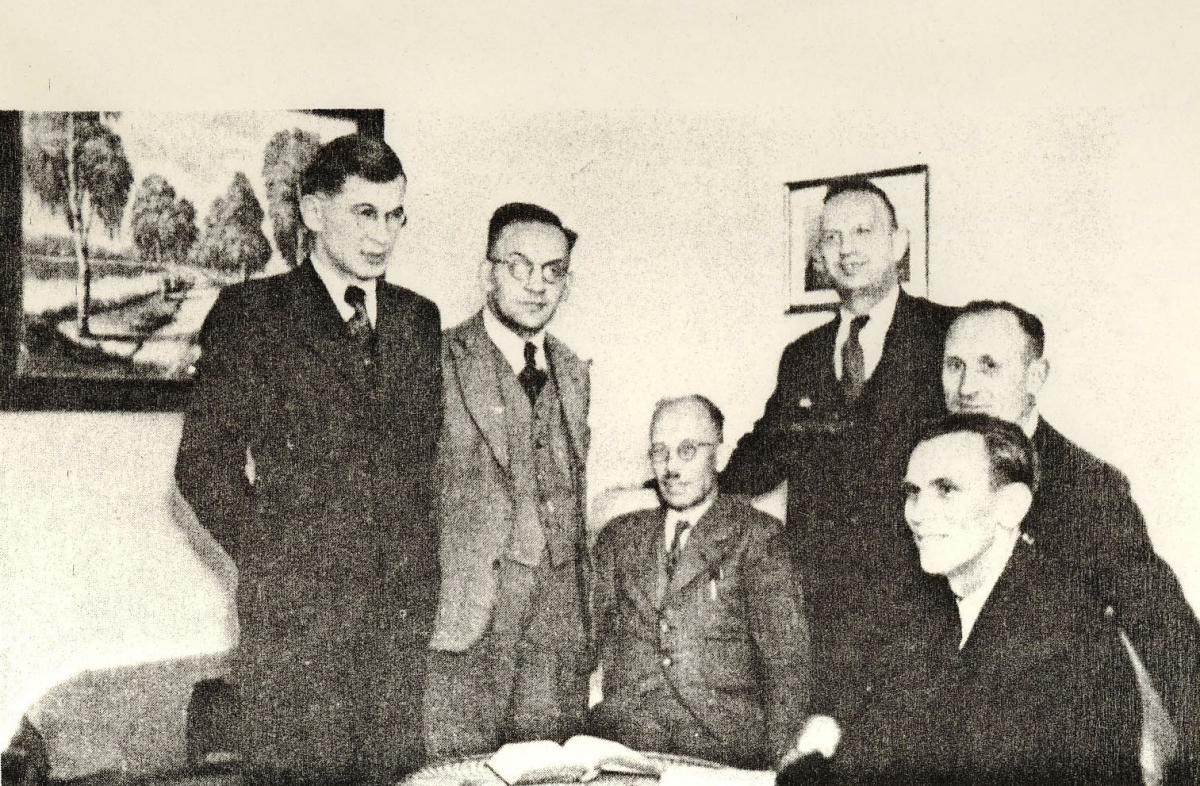 The leaders of the Königsberg District met in the home of Max Freimann (seated center) in 1943 (Freimann)
The leaders of the Königsberg District met in the home of Max Freimann (seated center) in 1943 (Freimann)
Notes
[1] Presiding Bishopric, “Financial, Statistical, and Historical Reports of Wards, Stakes, and Missions, 1884–1955,” CR 4 12, 257.
[2] Manfred Deus and Katharina Deus Siebenhaar, interview by the author, Sandy, Utah, March 9, 2006.
[3] Ruth Freimann Dietz, Ingrid Freimann Juras, and Irmgard Freimann Klindt, interview by the author in German, Salt Lake City, March 23, 2007; unless otherwise noted, German summarized in English by Judith Sartowski.
[4] Reinhard Freimann, interview by the author in German, Hannover, Germany, August 6, 2006.
[5] Inge Grünberg Seiffer, interview by Jennifer Heckmann in German, Backnang, Germany, August 17, 2006; audio version or transcript of the interview in the author’s collection.
[6] David Irving, The Destruction of Dresden (London: William Kimber, 1963), 78.
